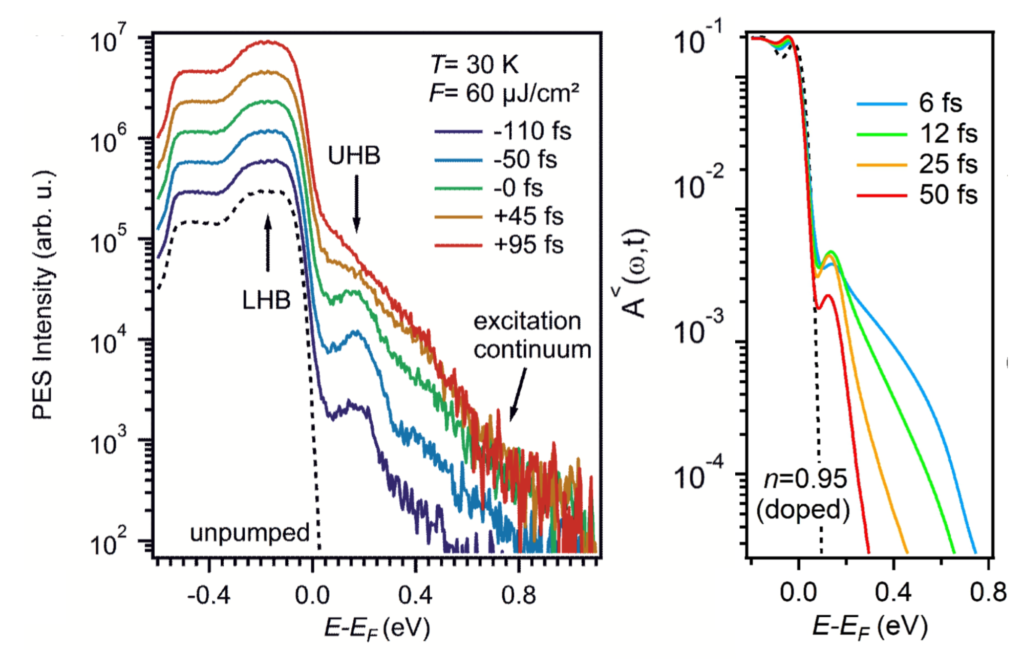Ultra-fast light-induced dynamics in condensed matter
Relaxation and thermalization in quantum many-particle systems:
The question how a many-body system relaxes to thermal equilibrium lies at the heart of statistical physics. Its investigation has experienced renewed interest due to the possibility to study related issues in experiments with cold atoms. Our studies based on DMFT are distinct from other techniques because they can address systems of high dimensionality. For example, they have revealed genuine non-equilibrium phenomena, including dynamical transitions in fermionic lattice models, first-order dynamical transitions related to the Loschmidt-Echo, or non-thermal critical behavior in systems with long range order.

More recently, we could bring such simulations to the point where they allow semi-quantitative predictions for real materials. For example, simulations could explain the thermalization of the electron liquid in 1T-TaS2 near a Mott metal-insulator transition (Fig.1). In this regime photo-excitation transfers the system into a bad metal, an unconventional state whose dynamics cannot be described in terms of simple quasiparticle kinetics. Another interesting contribution has been the successful explanation of the striking ultra-fast demagnetisation in the Mott insulator SrIrO4. SrIrO4 has a low-temperature antiferromagnetic phase, with a ferromagnetic component due to the strong spin-orbit coupling. The experiment observed an ultrafast decay of the ferromagnetic component. Our DMFT simulations could clarify that ferromagnetic and antiferromagnetic moments are rigidly linked during the dynamics, so that the ferromagnetism can be quenched by the same ultrafast mechanism (the excitation of string defects) as the antiferromagnetic order.